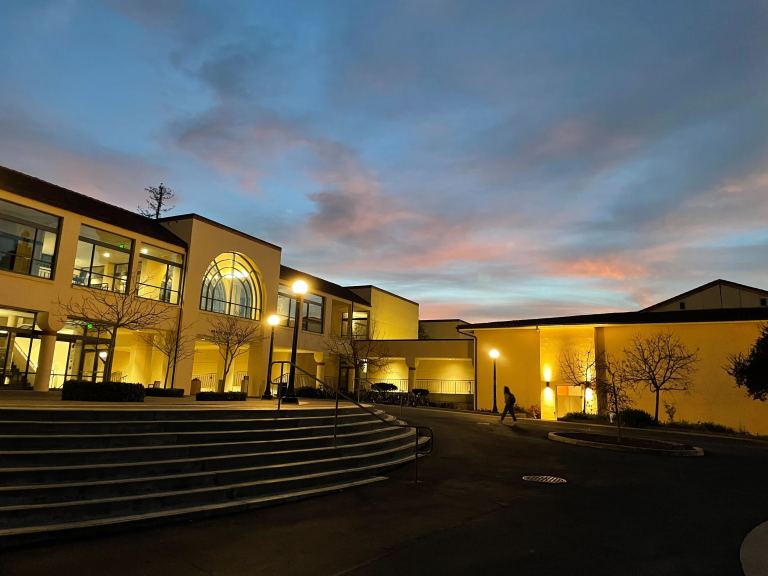An enormous collection of records was donated to Stanford by UC San Diego Professor Emeritus Bram Dijkstra and literary agent Sandra Dijkstra. Amassed over six decades, these recordings encompass a wide range of musical works with Black historical roots, spanning jazz, reggae, blues, soul and other genres.
Though initially bound for San Diego State University, cost disputes led the Dijkstras to seek another home for the collection. Once Stanford’s Music Library catalogs the collection, which includes multiple rare and irreplaceable recordings, it will be available for students, faculty and researchers at the Archive of Recorded Sound in Braun Music Center.
On February 13, Stanford’s Libraries and the Department of Music hosted an event in Green Library’s Bender Room celebrating the donation of over 8,000 vinyl records. Bram Dijkstra joined the reception through Zoom, describing how he grew up in the Netherlands and began collecting imported American records as a teenager.
He recounted first hearing saxophonist John Coltrane on a 1955 album by Miles Davis — he was blown away. Dijkstra explained that Coltrane’s music “became my guiding spirit for basically the rest of my life,” citing the saxophonist’s constant focus on the spirit of spontaneity and creativity, the pure power in his sound and the people who played with him. Fittingly, the donated collection contains essentially all of Coltrane’s commercial releases.
Stanford’s acceptance of this donation holds the potential to shape the future academic and research directions of the Music Department.
Stephen Hinton, the Music Department Chair, commented that he hopes students, professors and other researchers take advantage of what this collection has to offer. Having extensively worked with recorded music, Hinton is also excited to delve into the collection and explore it himself. In the end, the full potential of this collection will only come to fruition once it’s available for use.
Although the department offers programs in non-classical music, global music and ethnomusicology, it is still fundamentally Western-centric in its approach. This is similar among many of Stanford’s peer institutions.
When asked about the Music Department’s future directions more generally, Hinton explained that the department is currently expanding its offerings to move away from this Western-centricity and toward a more global scope. For example, they are in the process of onboarding a second ethnomusicologist as part of a broader plan to strengthen the ethnomusicology program. The new Black Music collection is also a significant step in that direction.
One point to consider is Stanford’s role and responsibility as the keeper of this Black Music collection. Stanford is a historically white-dominated institution which does not have a perfect history of diversity, equity, and inclusion. Additionally, Stanford is economically powerful and has had an enormous effect on surrounding communities — for one, take its possession of Muwekma Ohlone land. Meanwhile, a lot of Black music is rooted in resistance to oppression and systems of power.
For instance, Dijkstra’s collection includes records by reggae singer Neville Martin and other Jamaican music. Martin’s song “The Economic Crisis” (1977) was played for attendees at the event. Dijkstra explained that not many people outside of Jamaica listened to Martin’s music at the time, but it served as an important form of political expression because the music was spontaneous, energizing and direct in its lyricism.
Saxophonist Tamilore Awosile ’23 commented on the university’s responsibilities in accepting the collection, pushing for further substantial action.
“I think Stanford has a responsibility to both fully support and dedicate resources to Black scholars within the university who wish to conduct research relating to the collection, and also make the collection accessible to Black scholars outside the University who wish to engage with it.”
Safeguarding this irreplaceable cultural heritage is an opportunity for Stanford to directly connect to other efforts fostering diversity, equity and inclusion on and beyond campus.
Awosile is excited about both the collection’s diverse range of Black music and specific recordings, such as the entire 1950s Blue Note 1500 LP series. It encompasses some of his “favorite jazz albums of all time, including Cannonball Adderley’s ‘Somethin’ Else’ and Sonny Rollins’ ‘A Night At The Village Vanguard.’”
Kai Charp ’26, jazz pianist and vinyl record enthusiast, commented on the tradition these recordings represent.
“Jazz is a living and breathing music, so having an in-depth look at its history can enhance our relationship with it, and help us celebrate and continue its traditions. The solos from the great musicians on these records were improvised in the moment, and hearing them speak this music will help the musicians of today better understand this language,” he said.
